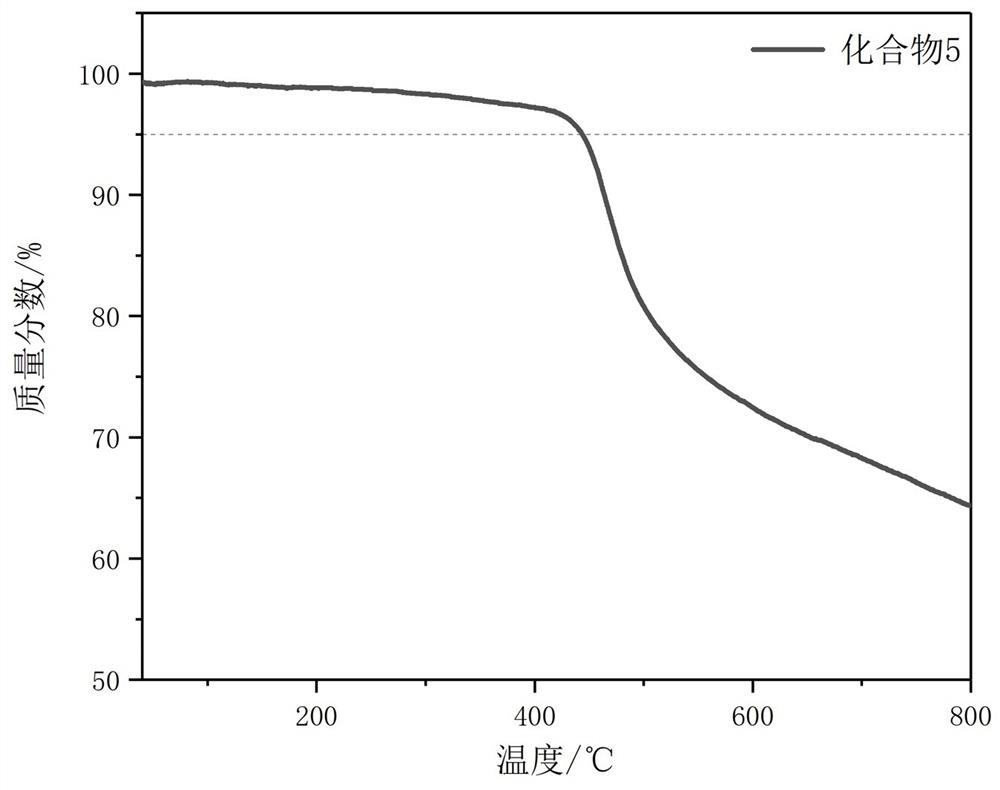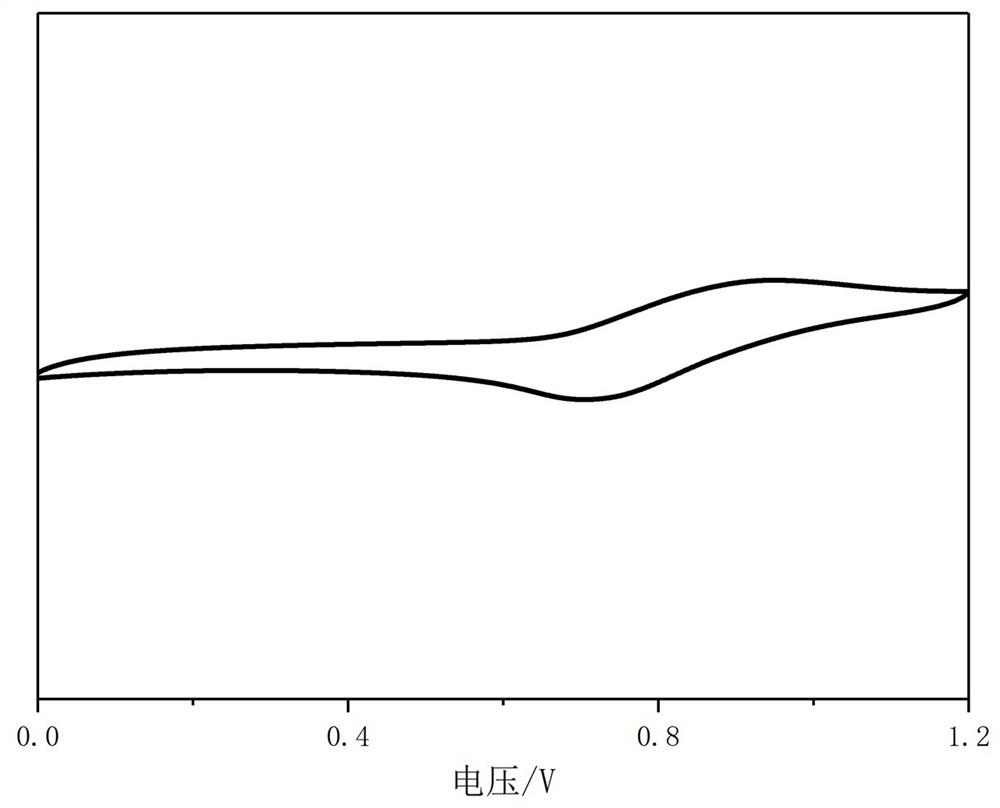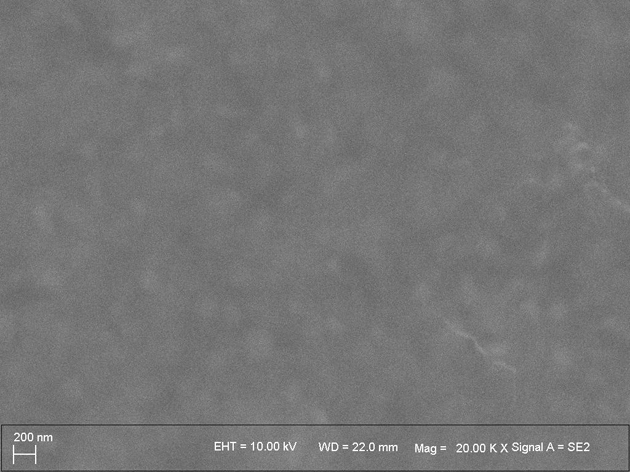Asymmetric organic molecule based on condensed ring electron-withdrawing parent nucleus as well as preparation method and application of asymmetric organic molecule
An organic molecule and electron-absorbing technology, applied in the field of solar cells, can solve the problems of doping perovskite solar cells, high synthesis and preparation costs, and increased device manufacturing costs, to achieve inhibition of recombination, passivation of surface defects, low molecular The effect of symmetry
- Summary
- Abstract
- Description
- Claims
- Application Information
AI Technical Summary
Problems solved by technology
Method used
Image
Examples
Embodiment 1
[0027] Synthesis of Asymmetric Organic Molecular Formula (5)
[0028] The synthetic route is as follows:
[0029]
[0030] The material (1) used in this example is prepared according to the literature Arroyave, F.A.; Richard, C.A.; Reynolds, J.R.Org. Lett. , E.; Schmiedel, A.; Moos, M.; Holzapfel, M.; Krummenacher, I.; Braunschweig, H.; Müller, U.; 25, 15463-15471. Prepared; other reagents can be obtained commercially.
[0031] The synthesis of formula (3) compound:
[0032] Under the protection of argon, add 378mg of raw material (1), 187mg of the compound of formula (2), 10mL of ethanol and 1mL of acetic acid into a 100mL two-necked round-bottomed flask in sequence, and heat to reflux at 120°C for 4h; Suction filtration of water and ethanol gave a yellow-green solid which was compound (3), and 286 mg of the product was obtained with a yield of 54%. HRMS (ESI) calcd for C 16 h 6 Br 3 N 2 S 2 (M+H + ):526.7523.found:526.7535.
[0033] The synthesis of formula (5)...
Embodiment 2
[0036] The synthesis of formula (3) compound:
[0037] Under the protection of argon, add 378mg of raw material (1), 280mg of the compound of formula (2), 10mL of ethanol and 1mL of acetic acid to a 100mL two-necked round-bottomed flask in sequence, and heat to reflux at 120°C for 4h; Suction filtration of water and ethanol gave a yellow-green solid which was compound (3), and 344 mg of the product was obtained with a yield of 65%.
[0038] The synthesis of formula (5) compound:
[0039] Under the protection of argon, into a 100mL two-necked round-bottomed flask, sequentially add 529mg of the compound shown in formula (3), 3.57g of the compound of formula (4), 22mg of tetrakistriphenylphosphine palladium and 20mL of tetrahydrofuran; the reaction system is heated to 80°C The reaction was cooled to room temperature for 8 hours, and the solvent was distilled off under reduced pressure; the crude product was purified by column chromatography (eluent: DCM:MeOH=10:1) to obtain 718 ...
Embodiment 3
[0041] Using the asymmetric organic molecular compound (5) prepared in Example 1 as a hole transport material, according to the literature: Wang, J.; Zhang, H.; Wu, B.; Wang, Z.; Sun, Z. ; Xue, S. Wu, Y.; Hagfeldt, A.; Liang, M. Angew. Chem. 2019, 58, 15721-15725. Preparation of perovskite solar cells. Test light source: AM 1.5 (solarsimulator-Oriel 91160-1000, 300W), data acquisition using Keithley 2400 digital source meter. see test results Image 6 , the short-circuit photocurrent density of the battery device reaches 23.42mAcm -2 , the open circuit voltage is 1.099V, the fill factor is 0.7923, and the photoelectric conversion efficiency reaches 20.39%.
PUM
 Login to View More
Login to View More Abstract
Description
Claims
Application Information
 Login to View More
Login to View More - R&D
- Intellectual Property
- Life Sciences
- Materials
- Tech Scout
- Unparalleled Data Quality
- Higher Quality Content
- 60% Fewer Hallucinations
Browse by: Latest US Patents, China's latest patents, Technical Efficacy Thesaurus, Application Domain, Technology Topic, Popular Technical Reports.
© 2025 PatSnap. All rights reserved.Legal|Privacy policy|Modern Slavery Act Transparency Statement|Sitemap|About US| Contact US: help@patsnap.com



